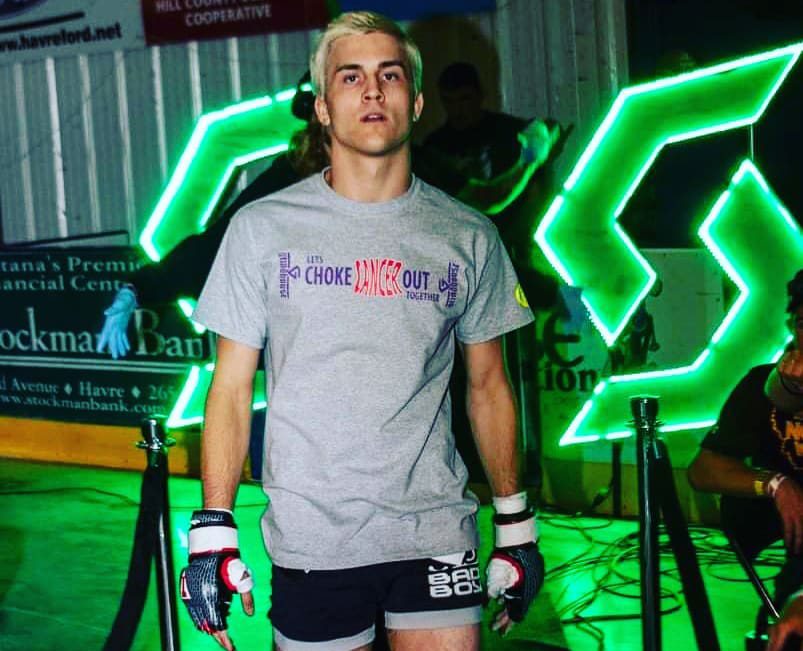As his head snaps back from a stiff left jab, 22-year-old mixed martial arts (MMA) fighter Connor Rideout gives his sparring partner a half smile, acknowledging the good punch. Rideout then bites down on his mouthpiece and returns the favour with a strong right cross of his own.
Training for an MMA fight is no easy task. It requires a massive amount of dedication, resilience, and a trust in training partners to not be too rough during controlled sparring sessions.
After winning the War of Gods lightweight title March 2, Rideout went on to win Cage Wars 41 on April 6, taking the interim lightweight title by submission after just one round.
Rideout had two priorities coming into this title fight: to make sure his body was in the best shape possible and to ensure that his brain was healthy and ready for combat.
“I’m always thinking about my brain every single sparring session, it’s my number one priority,” he told The Toronto Observer. “And I’m changing my game as a mixed martial artist because of that. I don’t want to get hit any more than I need to.”
Everybody loves a brawl, but you can’t blame a guy for not wanting to get hit.
—Connor Rideout
Whether it’s professional MMA, boxing, football or any other combat or contact sport, the elephant in the room is always the same: concussions, brain trauma and CTE.
MMA, formerly known as cage fighting, is a style of combat sports that allows both striking and grappling techniques and has a limited rule set. The objective of an MMA fight is to defeat the opponent by way of knockout, technical knockout, submission, referee’s stoppage or by a judge’s scorecard decision.
“MMA has been heavily scrutinized by a number of medical associations which have reservations about the safety of the sport due to participants receiving repeated head trauma, with some calls for the sport to be banned completely,” said one study from the International Journal of Environmental Research and Public Health.
Rideout is among a new generation of MMA fighters that have grown up in an era that is hyper aware of how damaging participating in the sport could be on their brain health.
Medical research such as the Professional Fighters Brain Health Study, which has been ongoing since 2011, suggests that there is a strong correlation between participating in MMA and developing CTE.
You can view a Twitter thread below that digs deeper into the research of CTE and MMA.
https://twitter.com/LKJournalism/status/1114321556757458944
CTE (Chronic Traumatic Encephalopathy) is a degenerative brain disease caused by getting repeated concussions and sub-concussive blows to the head over a long period of time. There are over 65 CTE symptoms, including depression, anxiety, slurred speech, memory loss, and various mental health disorders.
The difficulty with researching CTE is that it can be diagnosed only when a brain autopsy has been performed. Since MMA is a relatively new sport that went mainstream in 2005, there have been hardly any MMA fighters suitable for CTE research.
“We’ve had virtually no fighters in our brain-donation segment of our studies,” said Dr. Charles Tator, project director of the Canadian Sports Concussion Project at the Krembil Neuroscience centre. “It’s only in the last 10 years or so that this has been looked at intensively, although we’ve known in boxers for a while that there is brain degeneration, for almost 100 years now.”

A normal healthy brain against a brain that has advanced CTE (Wikipedia)
He is referring to “punch drunk syndrome,” where fighters experience memory loss and slurred speech at the end of their fight career.
For a long time, the issue of brain trauma and CTE in the MMA community has been met with awkward silences or outright dismissals. But the research that has been done is making significant changes for the new generation of MMA fighters, who are educating themselves about the risks of the sport and adapting their fight styles to save their brains.
Like many other up-and-coming athletes in the sport, Rideout’s style focuses on wrestling, grappling, and ground and pound so he can avoid taking any unnecessary damage, though he’s never afraid to shy away from an old-fashioned fist fight.
“Everybody loves a brawl, but you can’t blame a guy for not wanting to get hit,” he said.
Rideout thinks about pioneers of MMA like Gary Goodridge, who were known for being able to take a lot of damage and still win but who now suffer after their career because of that style of fighting.
Goodridge was diagnosed with potential CTE in 2012 and suffers from multiple related symptoms such as short-term memory loss and noticeable personality changes.
It’s not only MMA athletes who have to change their approach to the sport; the business of MMA is also being impacted by CTE research. MMA gym owners have had to market themselves to be more open to the public, and emphasize the importance of being in a controlled, safe environment, free of unnecessary damage.
“We need to convince the public that our gym isn’t full of a bunch of bruisers and savages beating each other up,” said Thomas Heffernan, owner of Primal MMA in Leslieville.
Heffernan has noticed that some people are hesitant to join gyms and train martial arts fearing the risk of brain trauma, though research suggests that the casual participant is extremely unlikely to develop a chronic condition.
“A lot of my job is communicating to people who might be interested in the gym and saying, ‘Hey, this will change your life for the positive, for your fitness, for your social life, for everything,’” he said.

